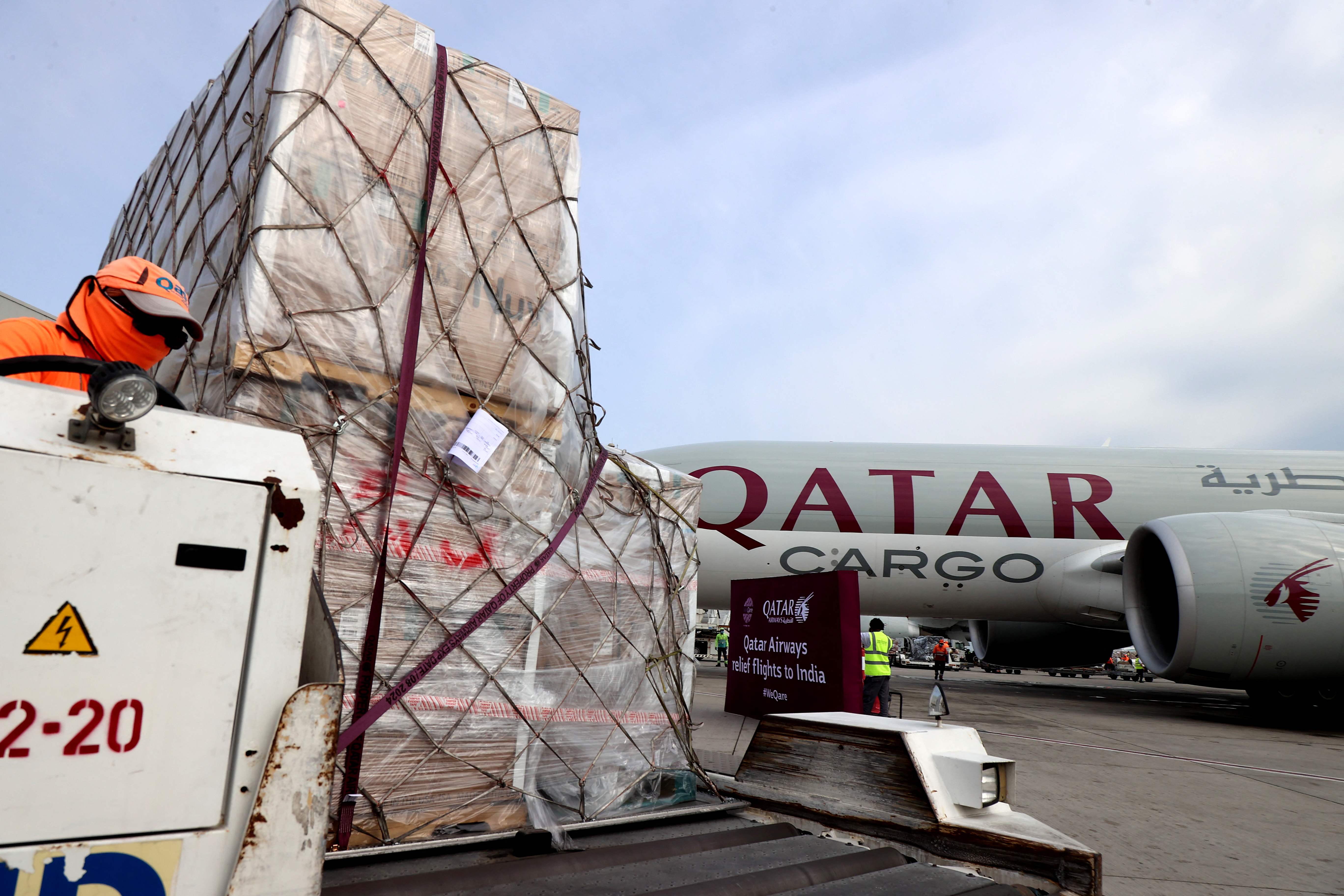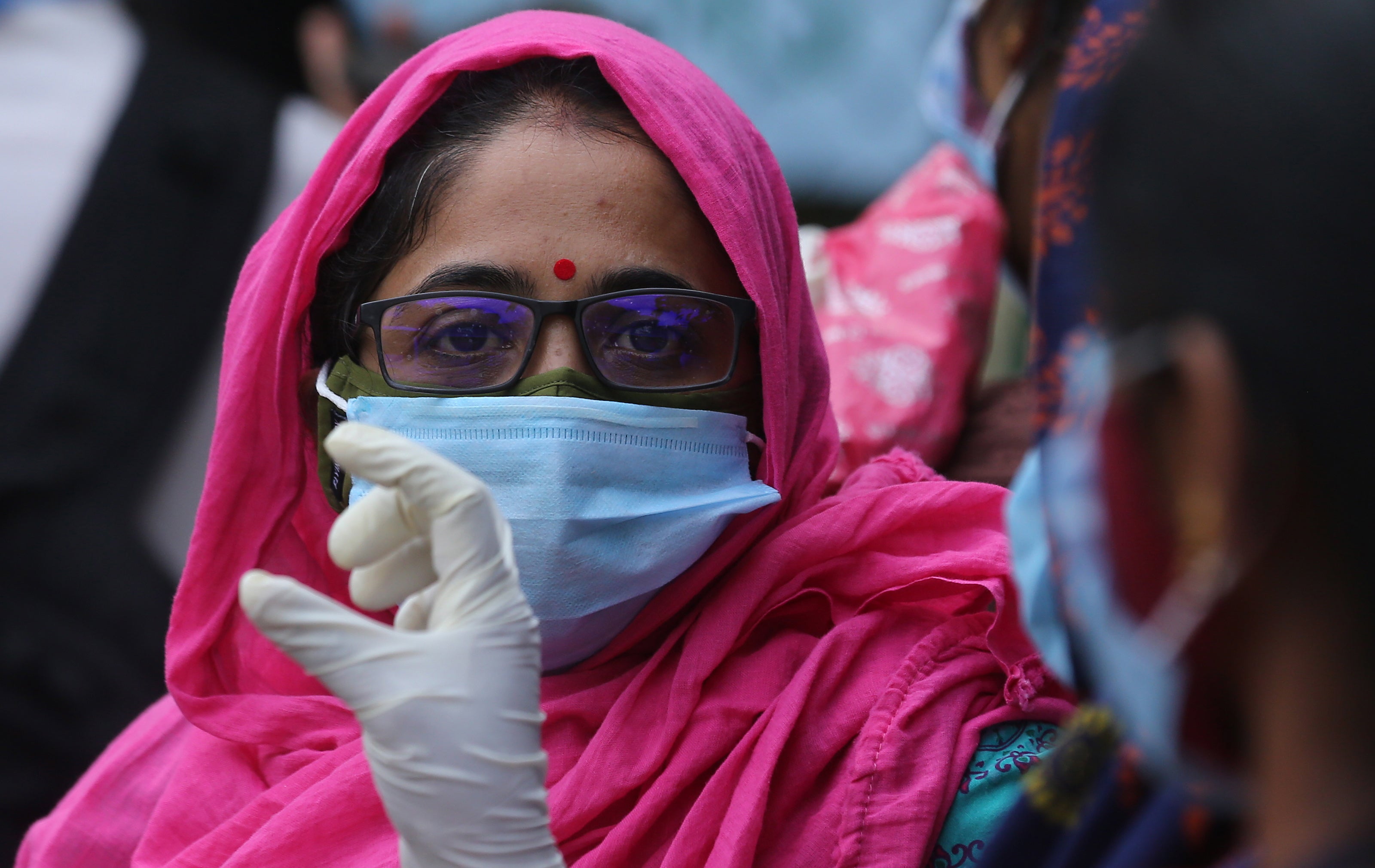Indian states say international Covid aid not reaching those in need
A week since consignments of medical aid began arriving in India, states and hospitals are still complaining of shortages

Your support helps us to tell the story
From reproductive rights to climate change to Big Tech, The Independent is on the ground when the story is developing. Whether it's investigating the financials of Elon Musk's pro-Trump PAC or producing our latest documentary, 'The A Word', which shines a light on the American women fighting for reproductive rights, we know how important it is to parse out the facts from the messaging.
At such a critical moment in US history, we need reporters on the ground. Your donation allows us to keep sending journalists to speak to both sides of the story.
The Independent is trusted by Americans across the entire political spectrum. And unlike many other quality news outlets, we choose not to lock Americans out of our reporting and analysis with paywalls. We believe quality journalism should be available to everyone, paid for by those who can afford it.
Your support makes all the difference.As hundreds of tonnes of Covid-19 relief material including oxygen cylinders and concentrators arrive in India from countries, questions have already begun over delays in distribution.
Several states claim they have not received any information about consignments, a a week after they first arrived.
India has so far received aid from almost a dozen countries, including the US and the UK, as the deadly second wave continues to wreak havoc, crippling its healthcare system.
On Thursday, India recorded 412,262 cases and 3,980 deaths, both record numbers, taking the country over 21 million total infections so far and more than 230,000 deaths.
The government said India’s so-called “double mutant” variant appeared likely to be linked to the recent surge in cases but stopped short at a news conference of saying they were causally connected.
While thousands of people in India are still posting urgent SOS requests on social media for oxygen cylinders each day along with hospitals raising alarms over depleting oxygen, government sources are insisting a large majority of the aid received has already been delivered to hospitals.
However, according to various statements from state officials, the distribution for consignments did not begin until as late as Monday evening, more than a week after the first batch of emergency assistance arrived in India.
Total supplies sent from all countries include1,764 oxygen concentrators, 1,760 oxygen cylinders, seven oxygen generation plants, 450 ventilators and more than 1.35 lakh Remdesivir vials and 1.20 lakh Favipiravir strips, according to the Health Ministry’s statement on Wednesday.
However, the hospitals are still reporting the same devastating shortages and several state governments and opposition leaders are questioning the federal government’s lack of transparency in distributing these supplies -- raising questions, even among foreign donors, of where the aid is going.
An Indian government source said that a large part of the aid received by India up to Tuesday has been distributed to hospitals, providing details of the allocation that includes states across the country. “We’re trying to get it all out, there’s nothing [to be gained] from trying to keep it,” the source said.
However, the government source confirmed that several items had faced supply problems, citing "cold chain issues" with delivering liquid Remdesivir, for instance. "Some of it has got stuck," they admitted. "But a lot of it has been delivered."
States, especially those not governed by the Narendra Modi-led Bharatiya Janata Party, complained of a lack of transparency in the distribution of aid.
Chhattisgarh health minister TS Singh Deo, speaking to news channel NDTV, said his government has asked for ventilators they are yet to receive. "We have asked for 280 ventilators a month back".

Rajasthan’s health minister Raghu Sharma said: "We sent delegations to (the government) for clarity on supplies of (oxygen), drugs and vaccination drive but were not spoken to in clarity from the Union Government."
"Regarding the import or foreign aid, no information or supply details have been shared with the state government," he said. The central government has "kept states in the dark during the pandemic," he added, calling for a more "transparent environment”.
According to a statement from Kerala’s health secretary Dr Rajan Khobragade to the BBC - the state, which recorded a record 37,190 new Covid cases earlier this week - had not received any aid until Wednesday evening.
According to the government sources, out of the eight oxygen plants sent from France on Sunday, two are already operational in Delhi now and the consignment was distributed within 18 hours. Delhi’s chief minister Arvind Kejriwal also tweeted that the national capital has received aid from France.
However, over a dozen hospitals in Delhi have been raising alarms for oxygen shortage in the last two weeks.
The Delhi government’s portal for checking availability for hospital beds has also started showing how long the oxygen in the hospital would last, some had oxygen for just a few hours. However, even after a week of consignments arriving, there was no update of any Delhi hospital receiving oxygen plants.
India’s government issued a statement on Tuesday saying it had introduced a "streamlined and systematic mechanism" for distributing the supplies.
The statement said it began work on the plan on 26 April, and issued its Standard Operating Procedure (SOP) guidelines on how to distribute aid on 2 May. It did not say when aid distribution began.
Government sources in India said information about how aid is being distributed “is being shared with donor governments - they are fully aware of where this stuff is going”.
Join our commenting forum
Join thought-provoking conversations, follow other Independent readers and see their replies
Comments